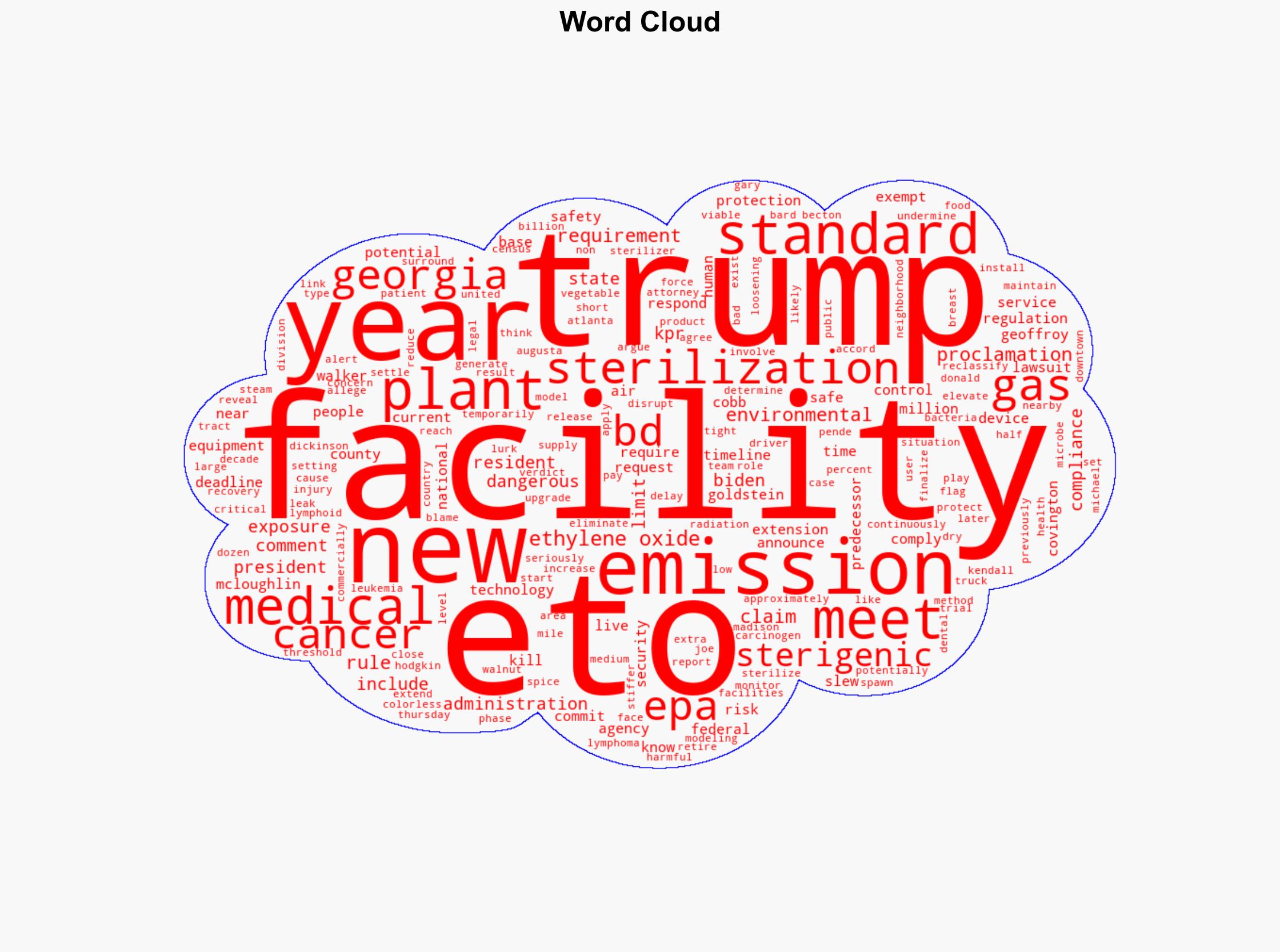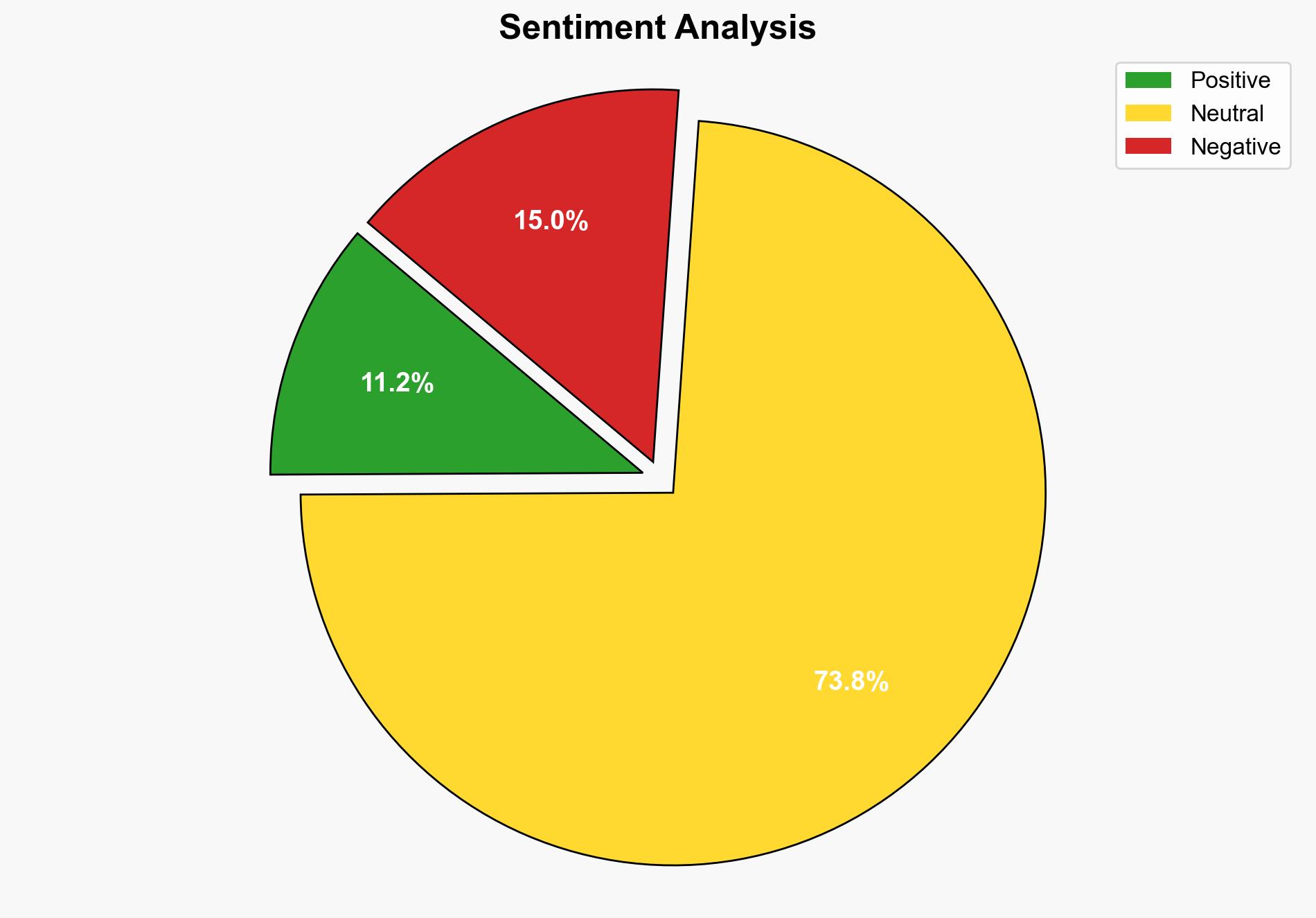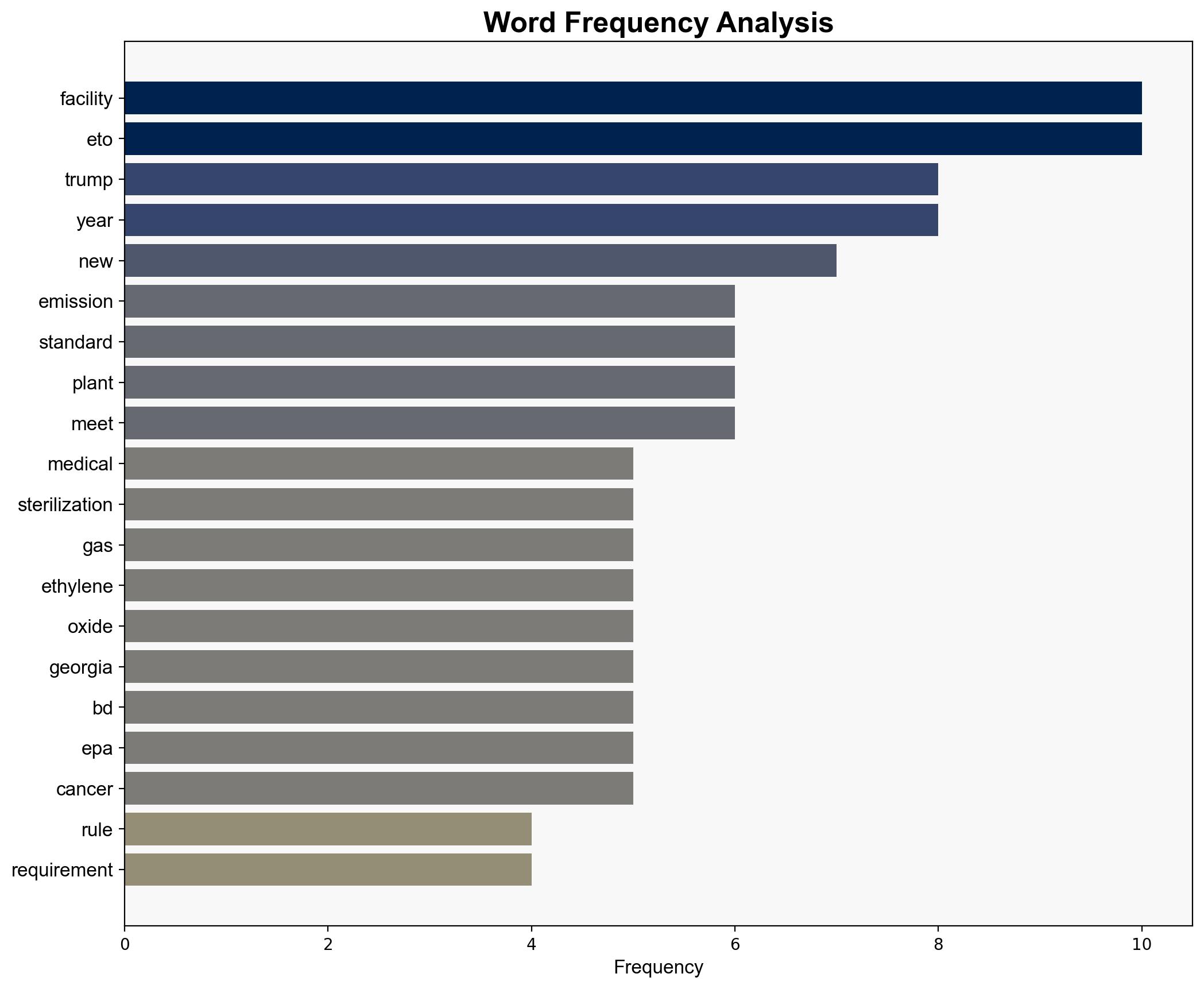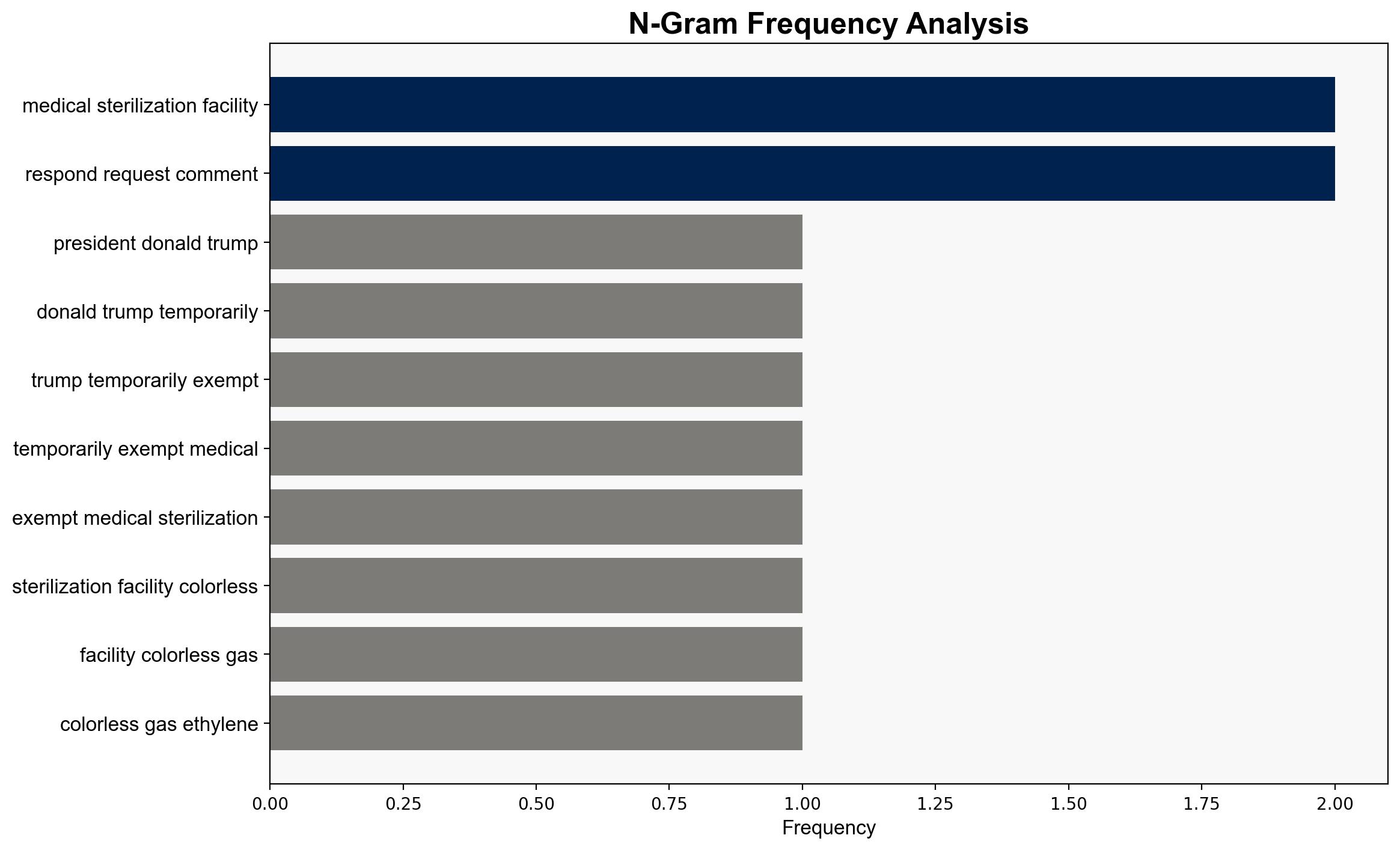Georgia sterilization plants using toxic gas among those exempt from new rules – Grist
Published on: 2025-07-26
Intelligence Report: Georgia sterilization plants using toxic gas among those exempt from new rules – Grist
1. BLUF (Bottom Line Up Front)
The most supported hypothesis is that the exemption of Georgia sterilization plants from new ethylene oxide (ETO) emission rules is primarily driven by economic and national security considerations. This conclusion is reached with moderate confidence due to the potential health risks posed to nearby residents. It is recommended to reassess the balance between public health and industrial needs, ensuring that adequate safety measures are implemented without compromising medical supply chains.
2. Competing Hypotheses
1. **Economic and National Security Hypothesis**: The exemption is primarily motivated by the need to prevent disruptions in the medical supply chain, which could have significant national security implications. The Trump administration’s extension and the Biden administration’s phased approach suggest a focus on maintaining medical sterilization capabilities.
2. **Public Health and Safety Hypothesis**: The exemption is a result of underestimating the health risks associated with ETO emissions. The decision may reflect a prioritization of industrial interests over public health, given the documented cancer risks and ongoing lawsuits related to ETO exposure.
3. Key Assumptions and Red Flags
– **Assumptions**: The economic and national security hypothesis assumes that alternative sterilization methods are not viable in the short term. The public health hypothesis assumes that the health risks of ETO are sufficiently severe to warrant immediate regulatory action.
– **Red Flags**: The lack of immediate action despite known health risks suggests potential regulatory capture or insufficient consideration of public health data. The reliance on industry claims about technological feasibility may bias decision-making.
4. Implications and Strategic Risks
– **Health Risks**: Continued ETO emissions could lead to increased cancer rates in affected areas, resulting in public backlash and legal challenges.
– **Economic Impact**: Stricter regulations could disrupt medical supply chains, impacting healthcare delivery and national security.
– **Legal and Reputational Risks**: Ongoing lawsuits and settlements could damage the reputation of involved companies and lead to financial liabilities.
5. Recommendations and Outlook
- Conduct a comprehensive risk assessment to evaluate the long-term health impacts of ETO emissions versus the economic benefits of the exemption.
- Explore alternative sterilization technologies to reduce dependency on ETO.
- Engage with local communities to address health concerns and improve transparency.
- Scenario Projections:
- Best Case: Successful implementation of alternative technologies reduces health risks without disrupting supply chains.
- Worst Case: Health impacts lead to increased litigation and regulatory backlash, disrupting medical supplies.
- Most Likely: Gradual implementation of new standards with ongoing public health monitoring and legal challenges.
6. Key Individuals and Entities
– Donald Trump
– Joe Biden
– Gary Walker
– Michael Geoffroy
– Fallon McLoughlin
– Becton Dickinson (BD)
– Sterigenics
– Kendall Patient Recovery (KPR)
7. Thematic Tags
national security threats, public health, regulatory compliance, industrial emissions, environmental protection





